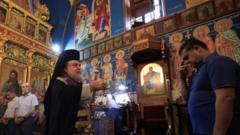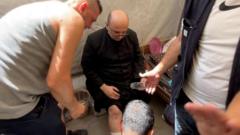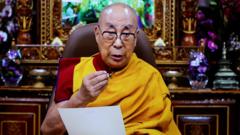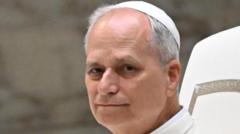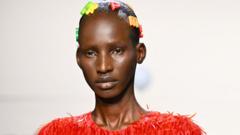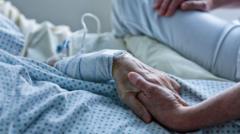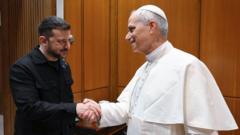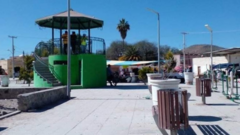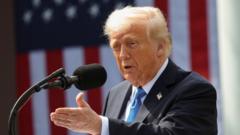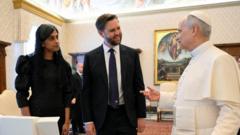The Vatican faces significant divides among cardinals, reflecting contrasting views that may influence the next papal election.
The Dynamics of Power: Inside the Vatican's Upcoming Conclave
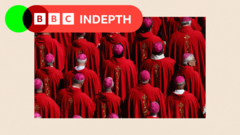
The Dynamics of Power: Inside the Vatican's Upcoming Conclave
Exploring the complex realities and diverse perspectives of cardinals as they prepare to elect a new Pope.
As the cardinals convene at the Vatican's Santa Marta guesthouse, the air is thick with anticipation and complexity as they prepare for the conclave aimed at electing the successor to Pope Francis. Marking the closing of a notable era, one guest suite remains sealed with a red ribbon, a poignant reminder of the late pontiff's impactful leadership and the future of the Catholic Church being decided behind closed doors.
Pope Francis’s influence has been profound, having appointed approximately 80% of the cardinals who will participate in the conclave. His era was characterized by a determination to move the Church’s focus from the Vatican’s elite to the broader spectrum of global believers, placing significant emphasis on the plight of the poor and disenfranchised. This pivotal shift makes many observers wonder if cardinals will lean towards continuity in Francis's vision or if dissenting views will tip the scales.
Throughout the two weeks following the Pope's passing, cardinals engaged in daily meetings referred to as general congregations, where all 252 cardinals, including those over 80, shared their thoughts. Notably, this conclave assembles the most diverse group of cardinals in history, representing countries like South Sudan, Papua New Guinea, and Rwanda for the first time. This diversity highlights the varying challenges faced by the Church in different regions—from declining congregations in Europe to pressing social issues in Africa and Asia.
The upcoming papacy not only embodies spiritual leadership but also that of a statesman, with the Vatican’s influence extending far beyond its physical boundaries. According to Chris Trott, the British ambassador to the Holy See, the Vatican’s agenda mirrors the focus of its reigning pope, meaning that the next leader will also bear considerable responsibility on the global stage. This extends to moral leadership as well, with Pope Francis increasingly becoming a spokesperson for marginalized populations, aiming to bridge divides through compassion and empathy.
However, within these discussions arise conflicting views among cardinals regarding how to proceed in a post-Francis world. Many voice concerns over issues such as sexual abuse and financial corruption within the Church, while hoping to clarify Pope Francis’s initial visions for reform. Despite some support for his progressive approaches, a significant divide exists, with traditionalists advocating for a return to long-standing Church teachings amid fears of losing doctrinal consistency.
The themes highlighted during Pope Francis's funeral—migrant rights, advocacy for peace, and environmental stewardship—echo the issues that have resonated broadly with global audiences, suggesting a desire among some cardinals for a pope who can navigate these contemporary challenges. With a significant portion of attendees applauding those themes during the funeral, the conclave is undoubtedly tasked with reflecting on how best to continue this legacy.
As the cardinals prepare to vote, the notion of unity has surfaced frequently among discussions. Yet, during the sacred proceedings inside the Sistine Chapel, the cardinals will be called upon to transcend political calculations and embrace spiritual guidance in their decisions—striving to ensure that the next Pope embodies the hopeful and compassionate voice that many perceive as lacking after Pope Francis’s departure.
Ultimately, the path forward for the Vatican, as these cardinals ultimately decide upon their new leader, may lead to transformations designed to innovate the Church while fostering an inclusive atmosphere that retains its foundational values.

